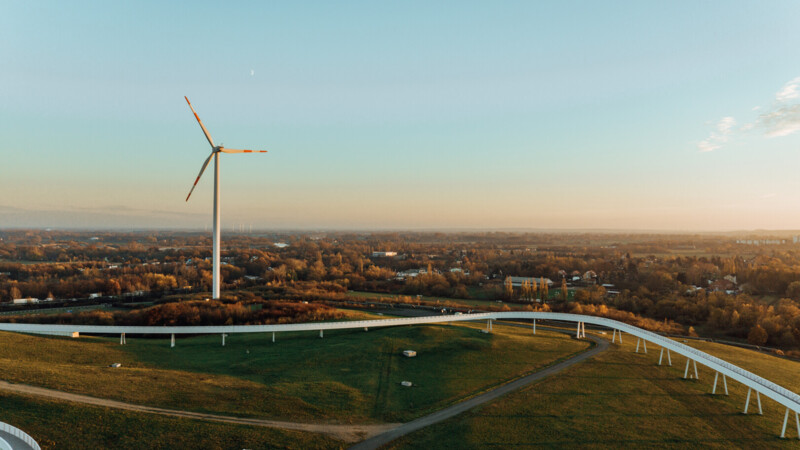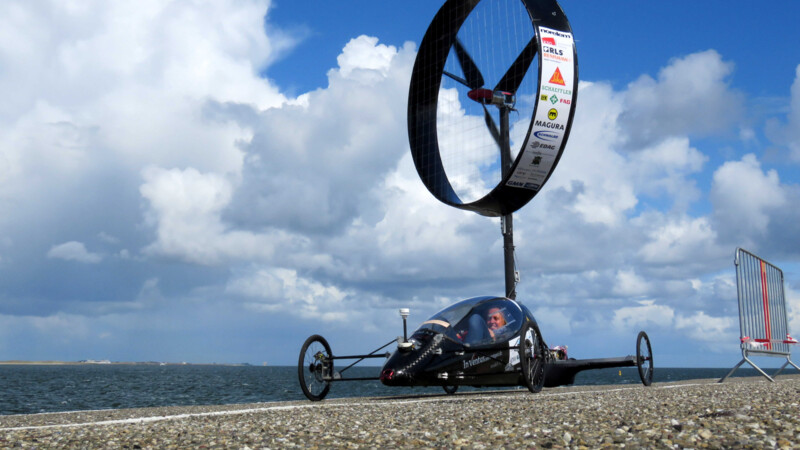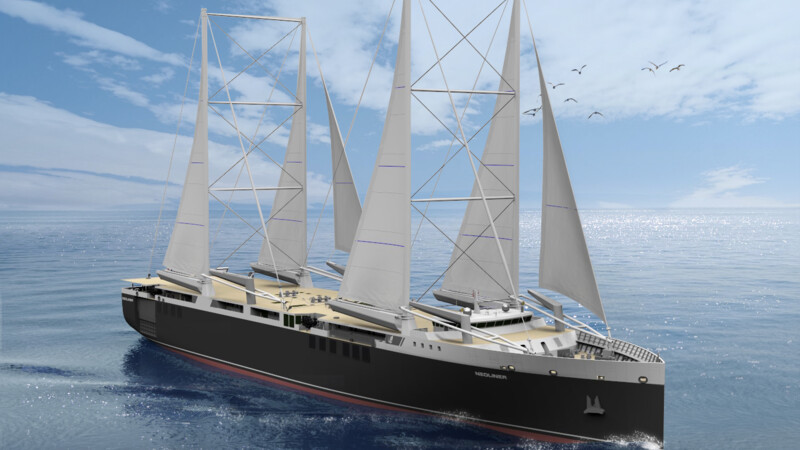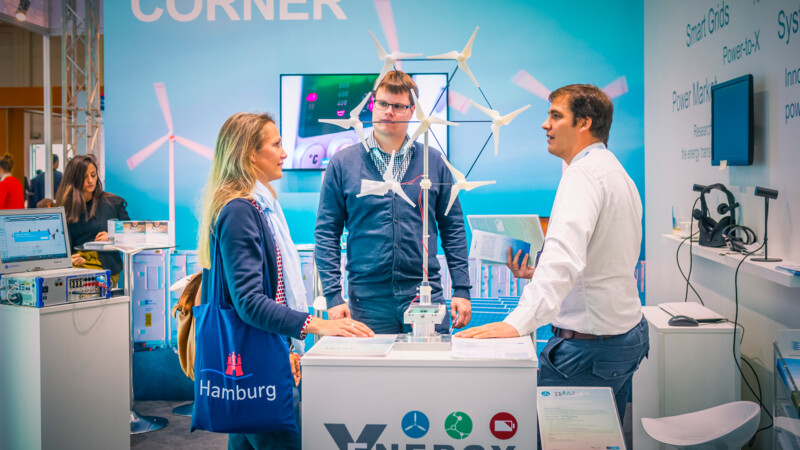Wind turbines are mounted as high as possible on towers for optimum energy output. However, there are limits to their heights. Thus, other ideas are emerging like airborne wind turbines that take off and fly through the air in search of stronger gales. However, such machines differ from the usual three-winged aircraft. The basic idea for airborne wind turbines originated with toy kites. But unlike children’s kites, the lines of Airborne Wind Power are up to 600 metres in length and are no plaything. Although some hail airborne wind power as the future of electricity generation, this is still a long way off as all airborne systems currently in the skies are strictly speaking still prototypes.
Airborne wind turbines, some of which are 300 metres in height, may yet become more common in future. The higher velocity and persistence of wind at high altitudes means turbines become stronger the more evenly the wind blows.
Airborne wind turbines for more energy
Pros and cons of airborne wind turbines
Airborne wind turbines have many advantages over conventional wind turbines as their foundations are not as complex and no towers are needed. That saves steel and concrete and thus money. All in all, they use around 90 per cent less material - and deliver twice the output, according to Alexander Bormann, Head of EnerKite GmbH in Brandenburg. However, airborne wind farms use precious materials e.g., carbon fibres rather than standard steel and concrete. Special materials for the tethers such as Dyneema - a high-strength, extremely lightweight fibre common in high-performance sports - is also used. Prof. Dr. Po Wen Cheng, Head of Wind Energy at the University of Stuttgart's Institute of Aircraft Design, said: "The technology is one thing, the other is the cost equation." The enormous amount of wind in high altitudes and the proportionately higher electricity output per year would improve the consistency of wind energy and solve the highly problematic issue of volatility. Wind power could provide base load electricity at sea and on land where people dwell. That would in turn reduce the effort involved. Transporting wind power from north Germany to the south requires enormous line capacities. More decentralized wind power generators would lower the need to build such lines.
More electricity from smaller plants and lower prices
If output is improved, two-megawatt, high-altitude wind turbines could achieve higher annual electricity yields than three-megawatt wind turbines. Fort Felker, former director of the National Wind Technology Center in the United States, and CEO of Makani, uses precisely this argument to promote aviation wind power: "The technology makes it possible to harness more energy with lower-performance turbines. And this could lower the price of electricity. European researchers expect to achieve significantly improved kilowatt-hour prices than with ordinary wind turbines. The price could be be two to four cents per kilowatt-hour, according to a high-altitude wind study in 2013 by the Fraunhofer Institute for Wind Energy Systems (IWES) in Hanover. Thus, high-altitude wind power would be cheaper than all other present means of generating electricity and would produce more environment-friendly electricity into the bargain.
Airborne or on the ground?
An estimated 50 companies worldwide are currently working on airborne wind turbines. Two different approaches are emerging:
- Those who favour airborne generators that produce in-flight electricity which is guided to Earth on special tethers and transport the generated electricity simultaneously.
- Those who prefer to generate electricity on the ground. A rising kite or wing unwinds a tether that drives a generator and produces electricity. This principle is called "yoyo" as the wing is always caught - and no electricity is generated in this phase.
Both methods have advantages and disadvantages. Makani counts among those in favour of airborne generators. Until recently, the Californian company was largely financed by Google, which in 2013 acquired a stake in Makani Power and invested millions over the years. At the time, Google aimed to become a self-sufficient supplier of environment-friendly electricity in the long-term and has now achieved that objective, it said. The investments have paid off. Makani is the number one company in a fairly new sector and has the world's largest, most powerful and best developed high-altitude wind turbine in operation at present.
Expertise from Hamburg and a pilot project
The Hamburg-based company, Skysails, is known for spanning large cloth kites on cargo ships and is now eyeing airborne wind turbines for obvious reasons. Skysails has vast experience with some of the pivotal aspects of wind power and can tame 400 square metre kites, the forces involved and stabilise tethers as well. The company has also developed an automatic system for launching and landing the gargantuan constructs at sea and controlling them while in flight. The system has already notched up around 1,000 flying hours, according to Skysails. "In total, more than EUR 75 million have been invested in developing Skysails’ technologies. Skysails is fortunate to have many long-standing partners who accompany and support our development," said Stephan Wrage, Managing Director of Skysails.
Skysails has been working on airborne turbines for many years. "Kites, steering and tethers are the three critical points. But they are not simply declarations. A pilot plant with an output of up to 200 kilowatts is currently in operation in northern Germany."
A guest article by Daniel Hautmann, freelance scientific journalist and author.
Sources and further information
Book:

Mankind has used wind power for thousands of years. Wind power is now more important than ever amid ongoing climate change and the conversion of energy to renewable energy sources. Daniel Hauptmann’s book shows other possibilities of harnessing wind power, when the power of inventors and investors are added on a large scale. The author goes far beyond the usual perspective of wind power for generating electricity and gives other fascinating examples - from cargo ships and wind-powered racing cars to floating wind turbines. The author highlights the technical facts and the environmental impact of each example. Daniel Hautmann: Windkraft neu gedacht. Erstaunliche Beispiele für die Nutzung einer unerschöpflichen Ressource, Hanser Verlag, Munich 2020, 229 pages, hardcover edition EUR 39.99, EUR 31.99.
Author:
Daniel Hautmann, 45, has been writing about technology, energy and the environment for around 20 years. He is a trained industrial mechanic, editor of trade journals and specializes in regenerative energies, especially wind power. He has competed with a world champion windsurfer and flew headfirst in a glider with the European aerobatics champion. His texts have been published in Brand Eins, Technology Review and the Süddeutsche Zeitung, among others. He occasionally presents radio shows, produces podcasts and writes books. www.danielhautmann.de.
More
Similar articles

Hamburg's Energie Dock seeking to avoid constraints in energy grid

Wind turbine cars setting record speeds

